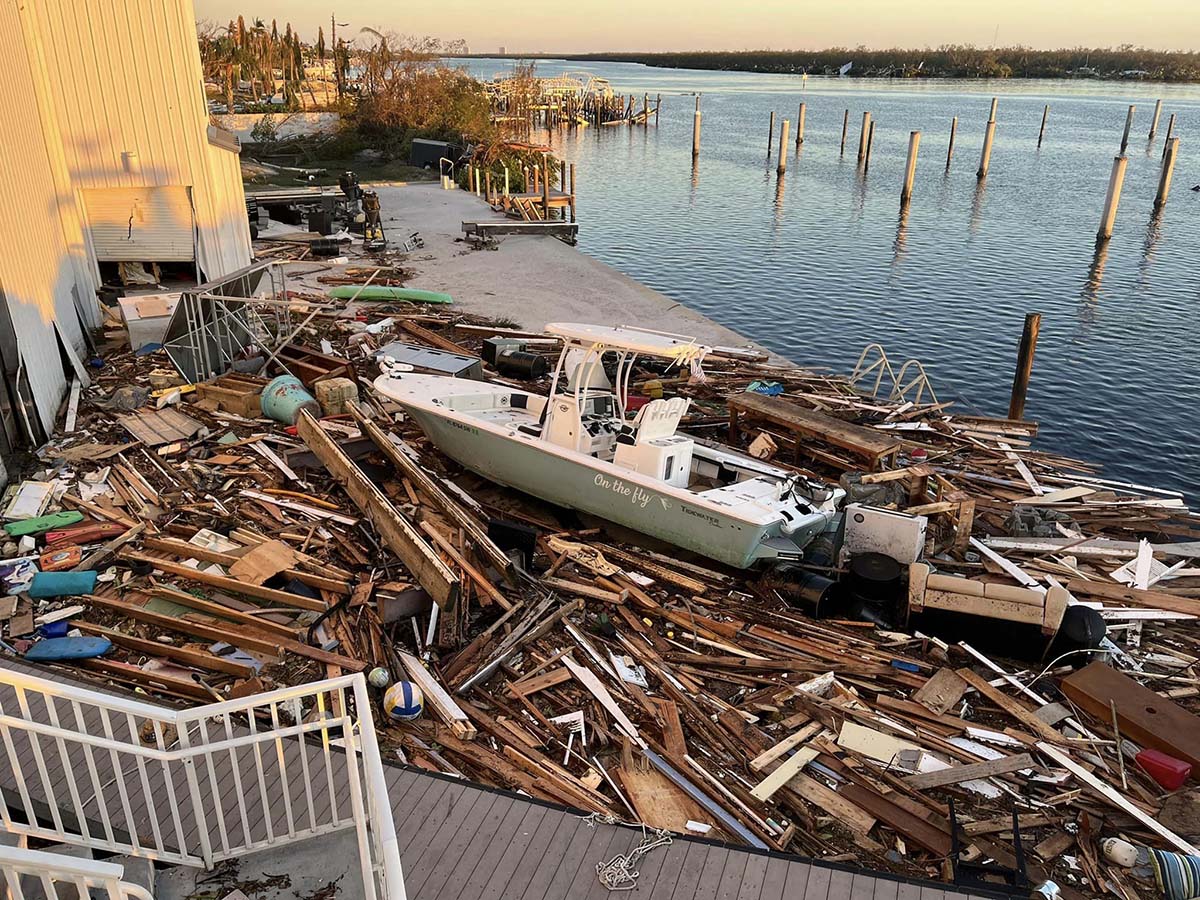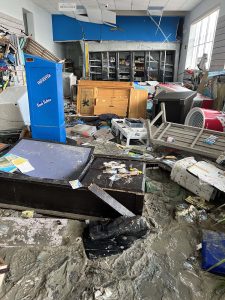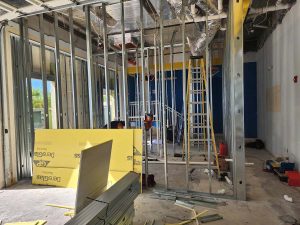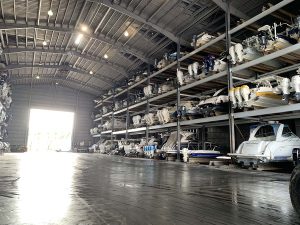
Snook Bight Marina Rethinks Storm Recovery After Hurricane Ian
Published on May 1, 2023In the fall of 2022, Hurricane Ian crashed onto Florida’s west coast to become the costliest hurricane in Florida history and the deadliest in the state’s history since the 1935 Labor Day Hurricane. South of Fort Myers, the Snook Bight Marina is finally seeing clear skies after months of recovery following the storm’s devastating blow. Built on Estero Island in 2012, the marina was later purchased by Suntex in 2015. While they cut no corners in their preparation and planning for the catastrophic storm, wading through the rubble in the aftermath, the staff picked up gems of knowledge for the years ahead.
“Leading up to this storm what we never really contemplated was a full major recovery and rebuild,” said Sam Chavers, senior vice president of Coastal Marinas at Suntex Marinas. “Over the years we’ve had docks damaged, boats sink, but never had the facility completely torn apart. There was no access to the facility and no power for a month. Employees were displaced and without cars, so it made us rethink as a company. We have a great storm plan. I wouldn’t change much there, but we need to be better prepared for the recovery and rebuild part of it. Never have we been in a place where we lost every slip in the marina.”

Being Prepared Starts Early
Suntex has a storm plan for all of its Florida marinas which includes detailed measures for several stages preceding a hurricane’s landfall. The stages commence at the beginning of the hurricane season (June 1), then 72 hours prior to landfall, 48 hours, 24 hours, and then a final recovery stage. “It details how we prepare the marina four days out, up to the day of the storm,” Chavers said. “When we shut down the power at the docks, when we haul the rental boats out of the water, all the way up to when we vacate the property. So we can leave the place in the best possible shape in the event of a storm.” The marina then reviews the storm plan annually to make improvements and updates.
The initial stage at the beginning of the season includes updating contact information, test running generators and pumps, checking various supplies and restocking oil spill kits and first aid kits. The 72-hour out stage includes an all-hands meeting, checking the storm plot and notifying boaters to remove vessels, test running pumps, backup computer records, relocating important records offsite, topping-off ice and fuel tanks, and confirming contact information for all staff. At 48 hours before landfall there is another all-hands meeting, a ground check for loose items, securing all trash cans and dock boxes, bringing backup fuel station onsite, checking all vessels for proper tie-ups and loose gear, clearing the ship’s store, posting important contacts on the door, and tying open all gates. At 24 hours before landfall there is another all-hands meeting, shutting off power and water to the docks, securing all doors and windows, a ground check for loose items, securing computer equipment and business records, rechecking all docks and vessels, and shutting off fuel and power supply.
From Recovery to Reopening
After the storm, the marina undergoes its recovery stage. The recovery stage tasks include: maintaining communication with staff, conducting the initial survey of damage, generating a priority list, arranging debris cleanup, contacting all necessary contractors, assisting and contacting tenants as needed, and inspecting and restoring power and water. The recovery stage also requires the staff to maintain a detailed record of events, damages, losses, and expenditures.

In the wake of Hurricane Ian, the marina faced a complete rebuild, as the wet slips had floated right up and off the pilings. The most damaging effects came by a 14-foot storm surge that wreaked havoc on the upland property, flooding the dry storage barn. “One simple thing we could have done was spring line the boats on the first level in our dry stack. The boats became a washing machine in there and were all over the place,” Chavers said. “Never did we imagine, if we had simply tied them to the uprights with a dock line, at least it wouldn’t have been this massive boat clean up afterwards. That was one of the biggest things.”
Chavers said communication with the customers was paramount. “We set up our Facebook, hotline, and a dedicated email address. We had a lot of people out of town, so they wanted to know, ‘Where is my boat? Can I get to it?’ We were just trying to give as many updates as we could, to try and make them comfortable. Communication was super important,” he added.
After Mother Nature’s fury, the inventory and paperwork follow. On handling the insurance side of things, Chavers was pleased with their company’s response. “Our insurance was extremely good to work with,” he said, “they were on site within seven days of the incident.” Access to the marina was an obstacle as officials closed off Estero Island to most of the public. “On the boater side of things, we require our customers to have insurance,” said Chavers. “Those companies were responsive, we didn’t have any challenges where they didn’t fulfill the need. If they had to bring cranes in or heavy equipment, they did. That went extremely well.”

Before a storm hits, Chavers recommended that marinas ask questions about insurance coverage. “Take the time to deep dive to make sure the things that you have insured are insured,” he said. “Where are the gaps and where are you covered? Where does wind take over? Where does flood take over? Marinas are a unique animal, you have things on the property, things off the property. We have tenants that lease from us, boaters that lease from us; a lot of moving parts.”
“The post storm was our biggest challenge,” reflected Chavers. “We have a pretty good storm toolkit, generators, and stuff like that and we’ll continue to enhance it.” Now, with their comeback nearly complete after five months of rehabilitation, Snook Bight Marina is ready for a brilliant summer on the water and the storm season that always follows.
| Categories | |
| Tags |





